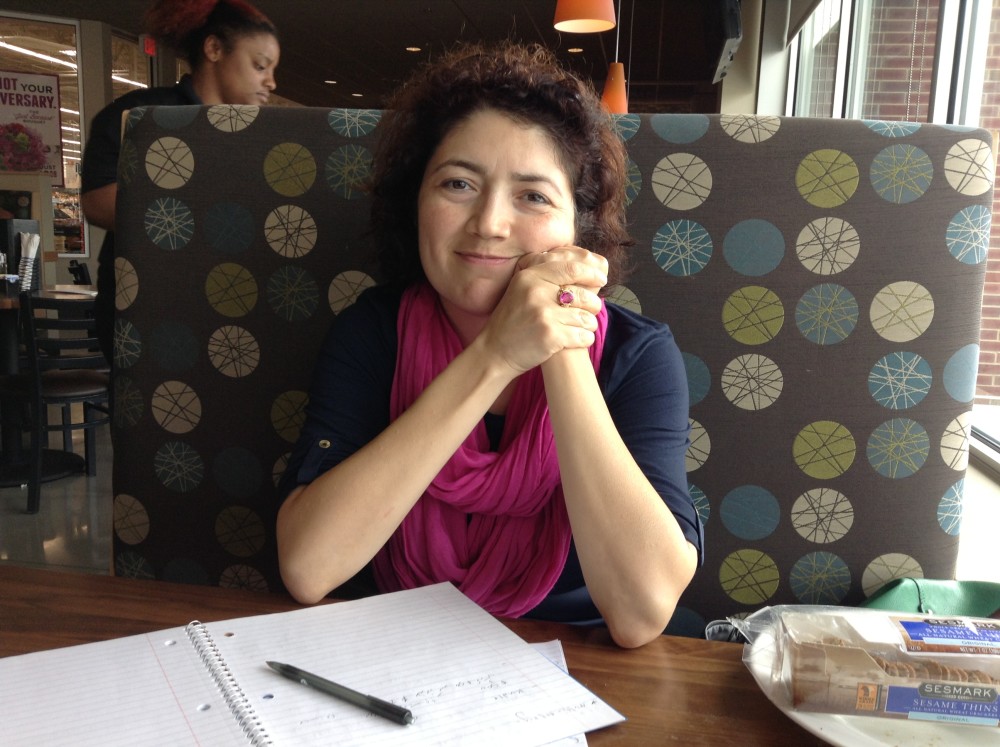By Doug Erickson
The Wisconsin State Journal
Saideh Jamshidi began by photographing more than 100 Madison-area Muslim women.
This was in August at the local Eid al-Fitr celebration, the large gathering of Muslims that annually marks the end of Ramadan, the Islamic holy month.
Jamshidi, an Iranian native who now lives in Madison, had attended her first local Eid celebration the year before, where she was struck by the joy and beauty around her. It was a vision of Islam so different from what often has been portrayed in the media since Sept. 11, 2001, she said.
“I couldn’t take my mind off the fact that it would be impossible to call any of these people terrorists,” said Jamshidi, 41, a freelance journalist and entrepreneur.
So for this year’s Eid celebration, she brought a seven-member team, led by a professional photographer, to the Marriott Madison West. They set up a temporary studio and invited people to pose.
The result is the Fashionable Muslim Women Project, a website that displays portraits of 72 of the 124 people photographed that day. While the focus was primarily on photographing women, males were not excluded and occasionally appear alongside female family members.
The goal was to show the pride and confidence of Muslim women in the West by highlighting the diversity of personal expression, Jamshidi said. That’s in sharp contrast to the stereotype of Islamic women being hindered by oppressive clothing, she said.
The fashion project evolved into a larger initiative that Jamshidi hopes will have far greater implications. In the last two months, she has added original articles to the website by a dozen or so paid contributors on most areas of Muslim culture, including art, music, film and food. She is funding the site with $17,000 of her own money but hopes the site will become self-sustaining through contributions, grants and advertising.
“I see an obligation,” she said, pounding her fist on a table during an interview. “If you’re a Muslim and you know you can do something to fight the stereotype of extremism, you have an obligation to do it.”
‘Cultural Muslim’
Jamshidi calls herself a “cultural Muslim.” She is not an active member of the religion and does not seek to convert anyone to Islam, she said.
Her own views toward Islam are conflicted, yet she holds dear her native Iran, where Islam is the national religion. “I love that place,” she said. “I love the people. I love the culture.”
She grew up in Tehran. In 1979, when Jamshidi was 6, the Islamic Revolution ushered in a theocratic government. Women became required to wear a headscarf in public as a sign of modesty and piety.
Jamshidi bristled at the compulsory dress, especially as she became immersed in women’s issues in her 20s. She was a journalist by then, writing for major news outlets. Colleagues who made waves with their reporting started being detained or worse, and she began to fear for her life.
In 1999, she immigrated legally to the U.S. to join her then-boyfriend, Sid Siahpush, who had arrived a year earlier as a college student. The two, now married, lived for a time in Seattle, where Jamshidi earned a bachelor’s degree in journalism.
They moved to Madison four years ago so that Siahpush could complete a residency in psychiatry at UW-Madison. Jamshidi earned a graduate degree in journalism from UW-Madison while raising the couple’s first child, daughter Ranna, 3.
While in Madison, Jamshidi has written for Al-Monitor, an international online news site covering the Middle East, and helped produce segments for “Inside Islam,” a collaborative effort between UW-Madison and Wisconsin Public Radio.
Doesn’t judge
Jamshidi has not worn a Muslim headscarf — often referred to as a hijab — since her airplane flight to the U.S., she said. “I threw it in a trash can in Amsterdam.”
Yet she doesn’t judge others. When a Muslim woman walked by wearing a hijab during an interview at a coffee shop, Jamshidi said it evoked no ill feelings.
“It’s a personal choice for these women in the West — that’s a big difference,” she said. “Yes, in many Islamic cultures, they oppress women. I don’t like it. But this is not the whole of Islam. We attach a lot of these prejudices to a religion, instead of to the patriarchal society.”
Heba Saeed, 22, a UW-Madison senior and one of the photo subjects, said she was excited to take part because the portraits show there is no one way to dress as a Muslim woman.
“Sometimes people might have a very narrow perspective — that you have to wear all black, or that your face must be covered,” she said. In her photo, Saeed wears a blue dress, a black blazer and a gold hijab punctuated with a splash of jewels.
The website should help demystify Muslim culture, said Steven K. Smith, associate director of the UW-Madison Global Studies program. He worked with Jamshidi on the Inside Islam media project.
“It’s a great idea,” Smith said of the website. “While there have been a fair number of people who’ve attempted to do this, no one has really done it broadly or well yet. So while it’s not unique, it’s still fresh and new.”
Jamshidi said she is giving the website a three-month trial run, at which point she will have spent the $17,000 she is willing to invest. She is testing the public’s interest by seeking contributions on Indiegogo.com, an international crowdfunding site. She also has begun broadening the website’s focus to include articles on Jewish culture, an attempt to address the tension between Muslims and Jews, she said.
In January, she will evaluate whether the venture has long-term potential as either a for-profit or nonprofit news organization.














































































































































































































































































































































































